Theory and Experimental Tests: The Nature
of Space and Time.
The
following papers discuss theories on the nature of space and time, and
experiments that have been performed to determine whether the
speed of light is constant in all directions as measured from
Earth.
1) The Premise for Comparing Ether Theory to
Relativity Theory.
 |
In
most interferometer experiments to date, do ether theory and relativity
theory actually predict the same results? We explain why this
is
so, and develop a series of equations to apply to interferometer
experiments to understand them in terms of ether theory.
|
2) Michelson and Morley Experiment (1887).
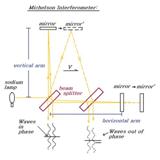 |
Discusses
the Michelson and Morley experiment, and how the results are consistent
with both relativity, Lorentz Ether Theory (LET), and ether theories
based on gravitational frame dragging.
|
3) Interactive Michelson Interferometer
 |
A
webapp that allows one to simulate the Michelson and Morley experiment
and set a variety of conditions to determine what amount of fringe
shift would be detected when the device is rotated from 0 to
90
degrees. Variables include Lorentz contraction, refractive index,
relative speed of frame (ether wind), path length, and
wavelength. Uses equations developed in "The Premise for
Comparing Ether Theory to Relativity Theory" above.
|
4) The Hoek Experiment (1868)
 |
Discusses
the Hoek experiment with the propagation of light in a medium with a
refractive index greater than 1, and how the results are consistent
with both special relativity and Lorentz Ether Theory (LET).
|
5) Interactive Hoek Interferometer
 |
A
webapp that allows one to simulate the Hoek experiment and set a
variety of conditions to determine what amount of fringe shift would be
detected when the device is rotated from 0 to 90 degrees.
Variables include Lorentz contraction, refractive index, relative speed
of frame (ether wind), path length, and wavelength. Uses
equations developed in "The Premise for Comparing Ether Theory to
Relativity Theory" above.
|
6) The Michelson-Gale
Experiment (1925)
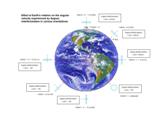 |
Discusses
the Michelson-Gale experiment and explains how it can be understood as
a Sagnac Interferometer rotating at a latitude-dependent angular
velocity.
|
7) Interactive
Michelson-Gale Interferometer
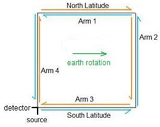 |
A webapp
that allows one to simulate the Michelson-Gale experiment. The original
parameters are pre-loaded. The dimensions of the experiment, the
latitude, the light wavelength etc. can be adjusted to see they effect
the experimental outcome.
|
8) Interactive
Sagnac Interferometer /Fibre-Optic Gyroscope (FOG)
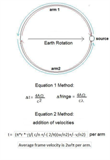 |
A
webapp that allows one to simulate the Sagnac effect. The original
parameters of the Michelson-Gale experiment are pre-loaded. Various
parameters can be adjusted to see how rotation, translation, and the
movement of the earth affect the readings of the interferometer. |
9) Gravitational
Time Dilation - A Lorentzian Interpretation
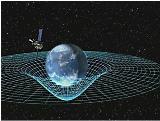 |
An
in depth discussion of how gravitational time dilation can be
explained by velocity effects, and using the reasoning of Lorentzian
ether theory, a new model of space is derived which is curved in the
medium of 3D space rather than in 4D space-time. The article also
covers the Hafele and Keating experiment, and models for the time
dilation of clocks at sea level (earths geoid).
|
10) Interactive
Hafele and Keating Time Dilation Experiment
 |
A
webapp to simulate the around the world time dilation experiment
using clocks flown on planes westbound and
eastbound. The
time lost or gained on each clock it determined with respect to a clock
that remains on the ground at the starting point. The simulator can
vary parameters such as the altitudes the clocks are flown at, the
latitude of the path over the surface of the earth, and the total trip
time for each flight. The individual terms (velocity, Sagnac and
height) are calculated and then shown separately and as a net time
gain/loss by each clock.
|
11) Interactive
Gravitational Potential and Coordinate Time Increment on Earth's Oblate
Geoid
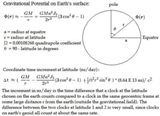 |
A
webapp to simulate the textbook calculation of gravitational potential
on the earth's surface, and the coordinate time increment of
clocks at different latitudes at sea level.
|
12) Interactive
Gravitational Potential and Coordinate Time Increment on Earth's Oblate
Geoid 1
 |
A more
advanced webapp simulation also comparing time dilation effects on
moving clocks at velocities and heights over the earth's
surface,
similar
to the Hafele and Keating experiment. |
13) Time Dilation, and How it Could be an Illusion.
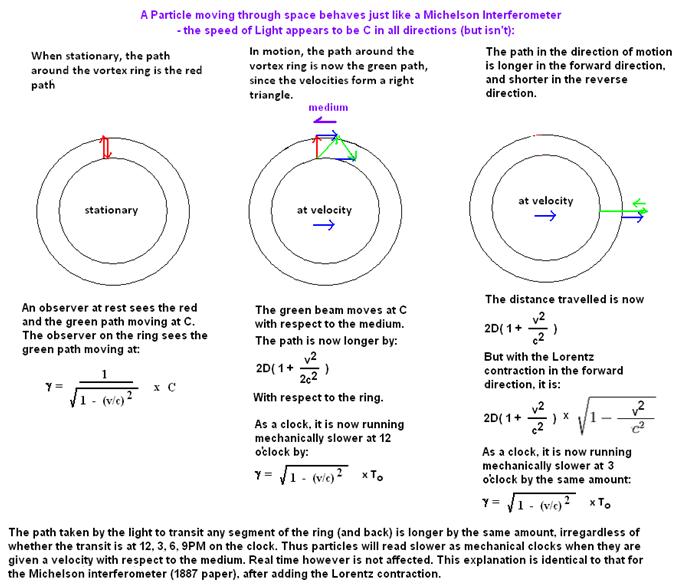 |
Discusses an alternative explanation for
relativistic time dilation.
|
14) Light Propagation in a Gravitational Field.
 |
Discusses Einstein's
1911 paper "On the Influence of
Gravitation
on the Propagation of Light.", proposes an alternate theory
of
gravitational refraction by the medium of space, and examines the
results of the Pound and Rebka Experiment.
|
15) The
Use of Moved Clocks: How this Challenges Special Relativity.
 |
Einstein
time synchronization excludes the possibility that the speed of light
is not constant in both directions. We show that if clocks and lengths
are synchronized, at least one moving frame must have a one-way
velocity of light differing from C.
|
16) Transverse
Doppler Effect.
 |
Discusses
Einstein's ideas regarding the Relativistic Transverse Doppler Effect.
and how the non-classical part of this effect can be
alternatively
explained as being due to a Lorentz contraction of the moving source as
suggested by Herbert Ives.Transverse
Doppler Effect.
|
17) Some
Notes on Understanding the Schrodinger Wave Equation.
 |
Our
attempt to work through the math involved in Schrodinger's wave
equation, from the perspective of understanding
how Schrodinger
used de Broglie's idea of an electron as a wave to model the hydrogen
atom.
|
18) The
Continuing Relevance of Lorentz Ether Theory in the Age of Relativity
 |
With the advent of relativity the Lorentz ether theory has been
relegated to not much more than a historical footnote.
What
is less well known is
that virtually all optical experiments to date to
test the validity of special relativity cannot distinguish between the
predicted outcomes of the two
theories. We
review the historical development of the Lorentz theory as it evolved
to address the results of key optical observations of the 19th
century. We
then examine how modern optical experiments attempting to detect the
relative inertial motion of an observer with respect to a
preferred
reference frame for light remain consistent with Lorentz’s predictions.
A french version of this article is available
here.
|
19)
NPA-18
Slide Presentation: The Continuing Relevance of
Lorentz Ether Theory in the Age of Relativity
 |
Presentation at the NPA-18 conference,
July 6th, 2011, the paper "The
Continuing Relevance of Lorentz Ether Theory in the Age of Relativity".
|
20)
The
Sagnac Effect: Does it Contradict Relativity?
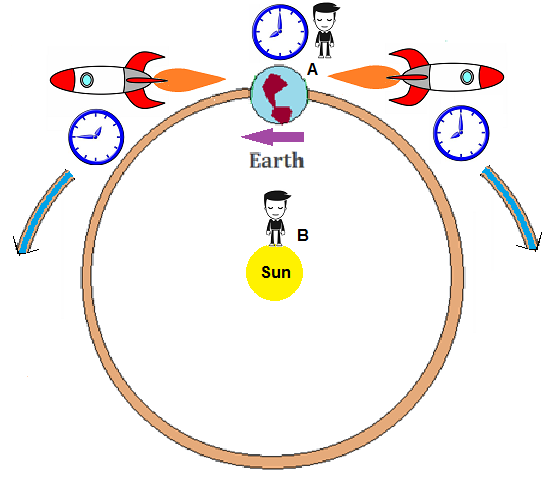 |
A series of thought experiments showing how the Sagnac effect
contravenes in principle the conceptsof the relativity of time and
motion.
|
21) Did
the Hafele and Keating Experiment Prove Einstein Wrong?
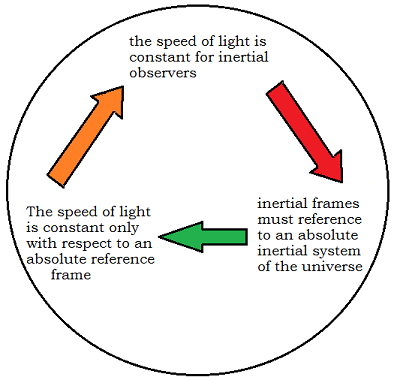 |
Hafele
and Keating performed a round the world time dilation experiment using
planes in 1971. Although the experiment is usually
applauded as a great
experimental verification of relativity, on deeper examination it is
found to require the adoption of a concept of
absolute reference frames
for inertial and rotational motion that would appear to put relativity
theory in contradiction wioth its own underlying
tenets.
|
22) The
Kennedy-Thorndike Experiment.
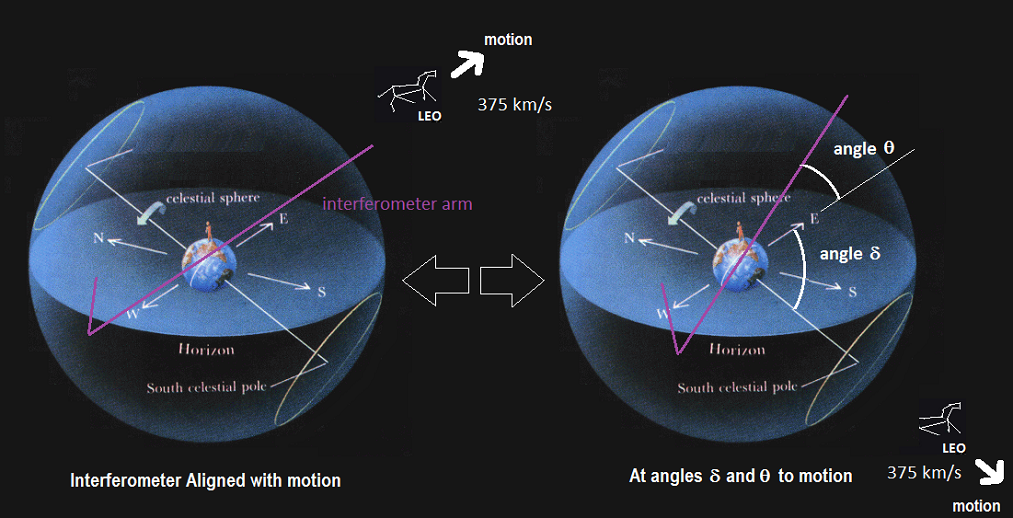 |
A
discussion of the Kennedy - Thorndike Experiment and a simulation with
examples to show how the experiment is consistent with the
predictions
of Lorentz ether theory.
|
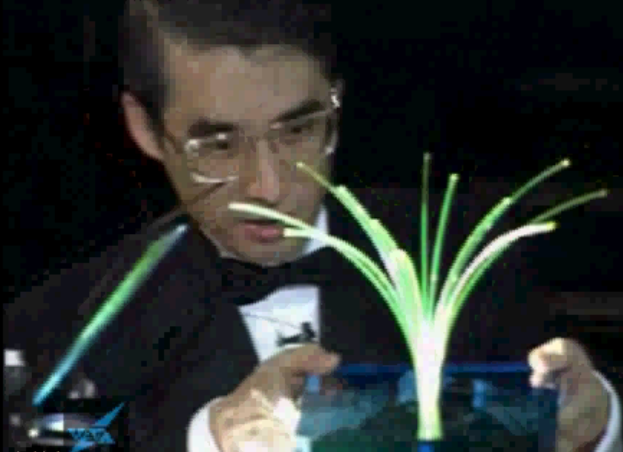 |
The
Lorentz force is usually described
abstractly without reference to the physical mechanism by which the
force acts
in
space. We show Maxwell's physical model based on magnetic lines of
force as vortex tubes in a medium. |

|
We
attempt to show why terrestrial aberration does not occur in a
Michelson interferometer. The light beams are shown to arrive at the
interferometer detector perfectly parallel despite any velocity, due to
a physical Lorentz contraction of the apparatus and the beamsplitter.
|

|
We
explain why a physical Lorentz contraction of matter with velocity
would be consistent with the wave nature of matter discovered by the
Nobel laureates de Broglie and Schrodinger.
|
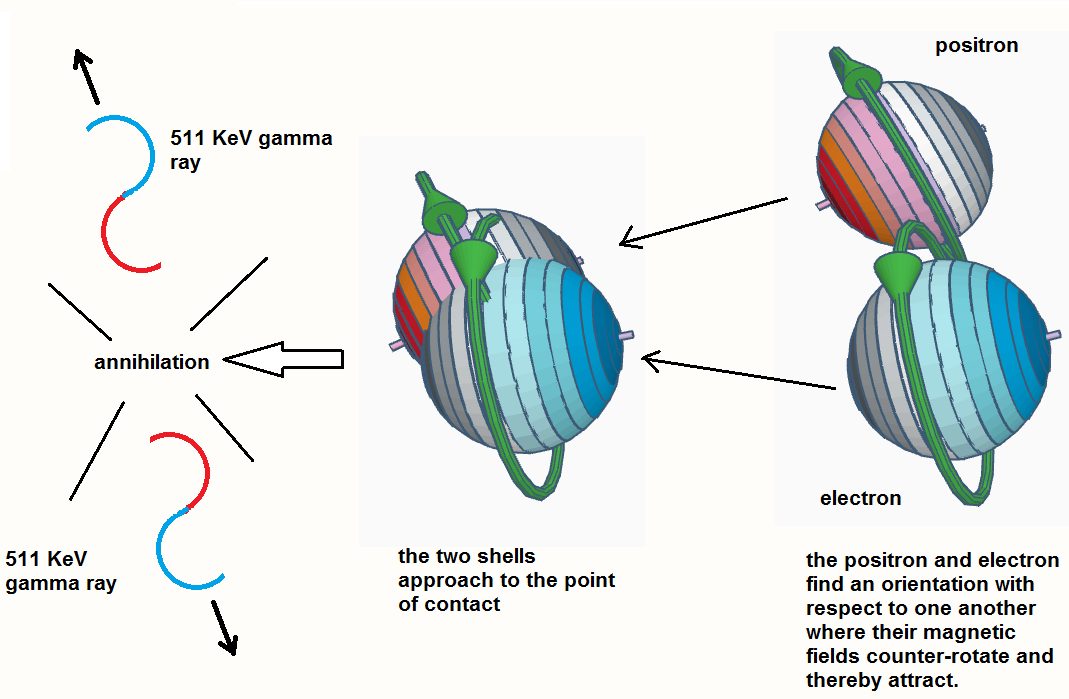
|
We explain
Schrodinger's physical model of the electron and the atom as
he appears to have conceived of it between 1926 to 1933 when
he
received the Nobel prize. We also dicuss the shortcomings of
this
model and some possible ways to overcome them.
|

|
We
explain why a physical Lorentz contraction of matter with velocity
would be consistent with the wave nature of matter discovered by the
Nobel laureate Schrodinger, using his spherical wave model of the
electron.
|

|
.
|
|